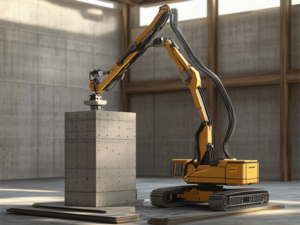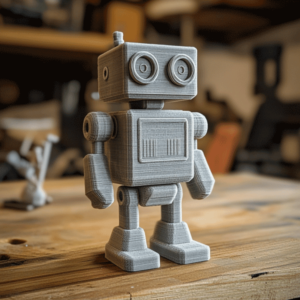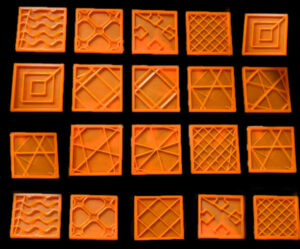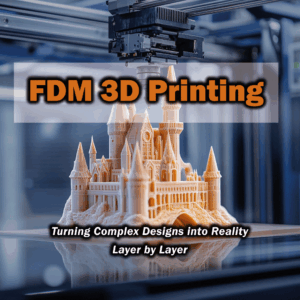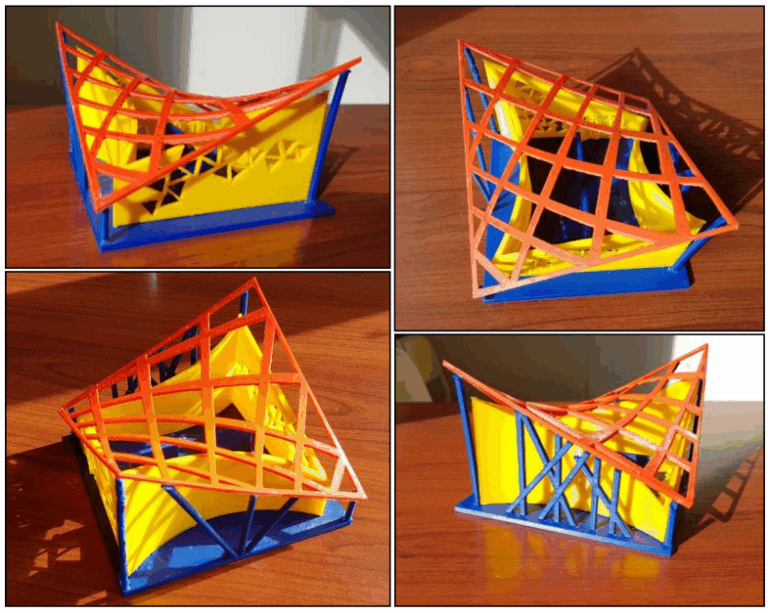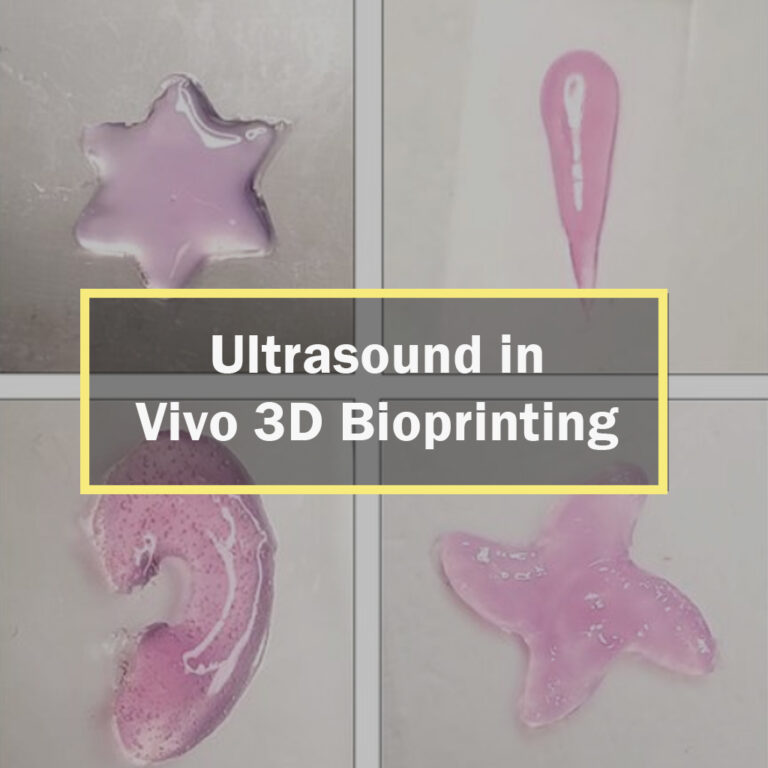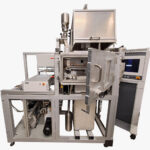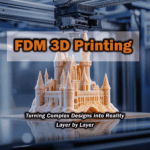The Use of 3D Printing in Robotics and Automation Technologies
With the ever-evolving technology landscape and the accelerating impact of digitalization, significant advancements—particularly those sparked by 3D printing in robotics and automation—are reshaping industries. In this environment of rapid development and transformation, expectations for new technological breakthroughs are naturally rising on both the producer and consumer sides. Whenever traditional production methods fall short, these emerging technologies step in to bridge the gap.
One of the leading technologies that has gained a lot of attention in recent years is 3D printing, also known as additive manufacturing (AM). Let’s explore how 3D printing is transforming the field of robotics and automation.
The Impact of 3D Printing in Robotics
The production potential of this technology and its ability to directly blend with users’ creativity have led to an exponential growth in its applications. However, as 3D printing technology became more widespread and accessible, it significantly advanced itself as well. The development of “3D printable 3D printers” and its close association with DIY culture have contributed to an incredible increase in users over time. Therefore, it can be said that the first and most impacted field by 3D printing technology is undoubtedly robotics.
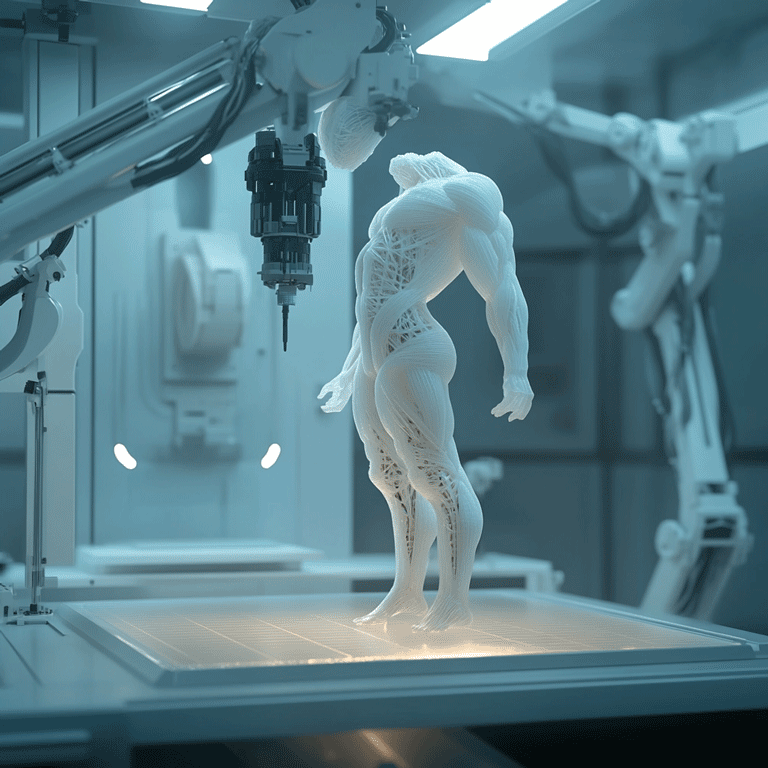
If we briefly discuss these impacts:
Enabling the Production of Customized Robot Parts:
The ability to produce customized robot components without the need for molds is critically important for the robotics field. Compared to traditional production methods that require molds, it has become a highly advantageous alternative.Providing Design Flexibility by Enabling the Production of Complex Structures:
This is a significant feature for users. Critical components that are very difficult or even impossible to produce with traditional manufacturing methods can be easily produced using 3D printing technology.Allowing Production with Lightweight Materials:
This makes it a preferred choice for many robotics projects. Weight directly impacts fuel consumption, making lightweight materials crucial for robots such as drones, where weight is an important parameter.Cost-Effective Materials and Accessible Technology:
The low cost of printing materials and the affordability of 3D printing technology itself are vital for manufacturers. (For a detailed review of printing materials, click here! Link)Empowering Students and Hobbyists:
Students can directly produce robot parts for their projects using 3D printers. This keeps their interest in education alive and enhances their creativity. Additionally, hobbyists frequently use household 3D printers for their DIY projects.
Now, let’s take a closer look at some real-life applications!
The scientific article titled “3D Printing of Magneto-Active Smart Materials for Advanced Actuators and Soft Robotics Applications,” published in the European Polymer Journal, explores the innovations offered by 3D printing, particularly in magneto-active smart materials, and how these contribute to the field of robotics and the development of smart devices.
While modern technologies, constantly evolving, significantly improve today’s living standards, advancements in material science are causing paradigm shifts in many new application areas. These developments have enabled innovations in areas such as material synthesis techniques and property characterization.
In this process, 3D printing technology, which allows the printing of highly complex structures with great precision, has opened up numerous intriguing fields for practical or real-world applications and contributed to the creation phases of many innovative materials.
To better understand this scientific study, it is also essential to have knowledge about 4D printing.
What is 4d Printing?
4D printing is an advanced manufacturing technology developed by integrating smart materials into traditional 3D printing techniques. This method gives printed objects the ability to respond to environmental stimuli and change shape. Developed by researchers, this technique allows printed parts to exhibit shape-changing abilities such as shrinking, swelling, folding, bending, rolling, and moving under various stimuli, enabling more precise control of the printed shapes.
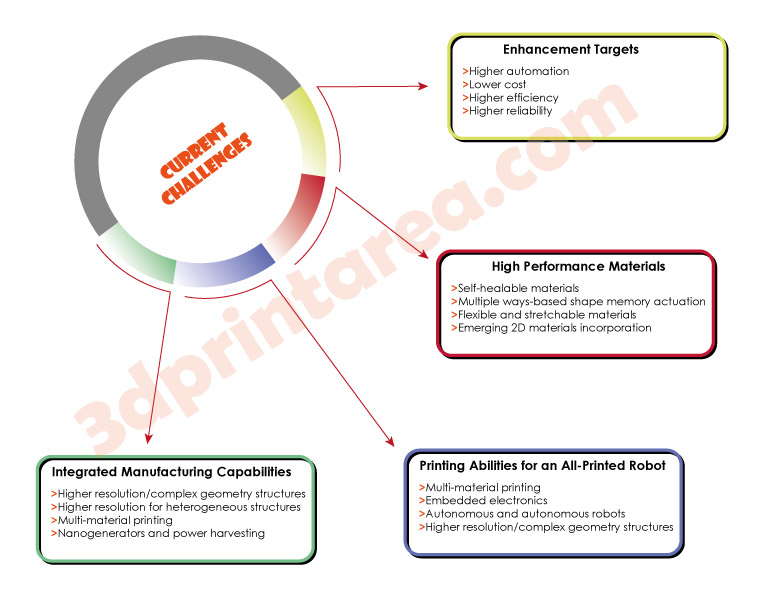
Soft Actuators and Robotic Systems
The study published in the European Polymer Journal focuses on soft actuators and soft robotic systems. Soft robotic systems can be described as dynamic systems made of flexible and adaptable materials. The research particularly emphasizes the development of smart materials reinforced with magnetic particles (magneto-active materials – MASMs) and their potential applications in soft robotic systems and actuators.
Magneto-active materials are intelligent materials capable of altering their mechanical properties in the presence of a magnetic field. These materials consist of two main components: magnetic filler materials and non-magnetic matrices. They offer features such as adjustable mechanical properties, rapid response times, and contactless interaction.
Shape-changing soft magnetic materials are widely used in fields such as soft robotics, sensors, actuators, and other biomedical devices. These materials include magnetic particles (MP) embedded in soft polymer matrices capable of rapid and reversible shape transformations. Due to their contactless nature, controllability, and safe interactions with biomedical tissues, they are preferred for many applications.
These advantages, especially due to magneto-active soft materials (MASMs) produced with the help of 3D printing, have garnered significant attention in soft robotics and flexible electronics.
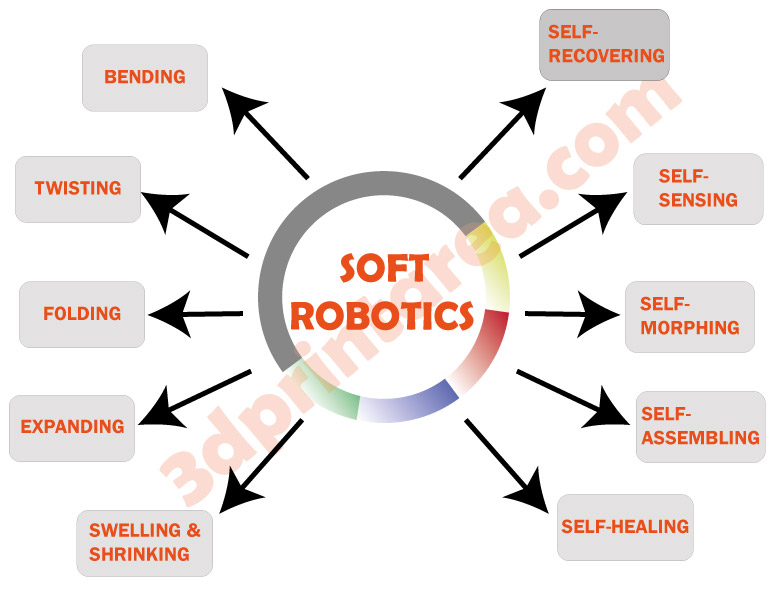
As seen, advancements in 3D printing technology have provided transformative opportunities in materials science and robotics, particularly in the development of magneto-active smart materials (MASMs). When combined with 3D and 4D printing technologies, MASMs offer the potential to design dynamic actuators and soft robotic systems with complex shape-changing capabilities.
Applications in the field of soft robotics not only highlight the versatility of 3D and 4D printing technologies but also demonstrate the potential of these innovative materials to enhance operational efficiency, ensure biocompatibility, and provide groundbreaking solutions to real-world problems.
References
Khalid, M. Y., Arif, Z. U., Tariq, A., Hossain, M., Khan, K. A., & Umer, R. (2024). 3D printing of magneto-active smart materials for advanced actuators and soft robotics applications. European Polymer Journal, 205, 112718.


